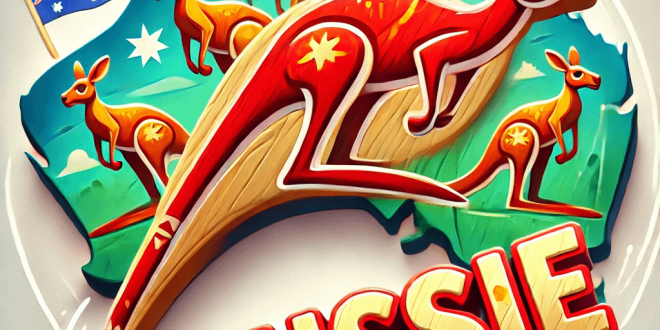Retro gaming, once a solitary pursuit relegated to dusty attics and forgotten corners, has undergone a remarkable transformation. No longer a niche hobby for a select few, it’s blossomed into a vibrant and influential global subculture. From meticulously restored arcade cabinets to meticulously emulated classics on modern devices, the allure of the past continues to captivate a growing audience, influencing game design, popular culture, and even our understanding of technology itself. I mean, who would have thought that Pac-Man would still be relevant today? It’s a wild world.
The Rise of Retro Gaming: From Obscurity to Prominence
Remember those days when admitting you still played Atari was a surefire way to get some strange looks? Yeah, well, things have definitely changed. Retro gaming has gone from being something of a social faux pas to a full-blown cultural phenomenon. It’s not just about nostalgia, though that’s a big part of it. It’s about rediscovering the roots of gaming and appreciating the simple joys of titles that paved the way for modern masterpieces. But how exactly did we get here?
The Initial Spark: Early Emulation and ROM Sharing
Let’s be real, emulation was the unsung hero of the retro revival. Early emulators, while often clunky and of dubious legality (we’ll get to that later), allowed gamers to experience titles that were otherwise inaccessible. Think about it: consoles broke, cartridges got lost, and some games were just too obscure to find. Emulation provided a lifeline, even if it did involve a bit of digital piracy, or at least that’s what they told me. ROM sharing communities sprung up, acting as digital libraries for these classic games. It was a bit like the Wild West, but hey, it got the job done, didn’t it?
The Role of the Internet: Fostering Community and Discovery
The Internet, of course, played a pivotal role in the retro gaming boom. It wasn’t just about downloading ROMs; it was about connecting with other like-minded enthusiasts. Online forums and communities became hubs for discussion, preservation, and even collaboration. You could share tips, tricks, and even homemade arcade cabinet designs! Suddenly, you weren’t alone in your love for those old games. You had a whole tribe of pixelated pals. Isn’t that something?
The Resurgence of Physical Media: Collecting and Preservation
And then something interesting happened: the physical media made a comeback! Forget just playing the games, people wanted to own them. Collecting retro games became a serious hobby, with rare and complete-in-box titles fetching eye-watering prices. It’s not just about playing; it’s about preserving a piece of gaming history. And let’s be honest, there’s a certain satisfaction in holding that old cartridge in your hands, isn’t there? That smell… That’s pure nostalgia.
Key Elements Driving the Nostalgia Factor
Okay, so we know retro gaming is popular, but why? What’s the secret sauce that keeps people coming back for more? I think it boils down to a few key things that resonate deeply with gamers, both old and new. It’s more than just rose-tinted glasses, trust me.
Simple Gameplay Mechanics: A Refreshing Contrast
In a world of hyper-complex game mechanics and sprawling open worlds, sometimes you just want something… simpler. Retro games often offer exactly that: pick-up-and-play gameplay that’s easy to learn but difficult to master. No endless tutorials, no convoluted crafting systems, just pure, unadulterated fun. It’s a refreshing contrast to the overwhelming complexity of many modern titles. Remember just jumping in and playing?
Iconic Characters and Memorable Stories: The Power of Familiarity
Mario, Sonic, Link… these characters aren’t just pixels on a screen; they’re cultural icons. They represent a simpler time, a time when gaming was just about having fun. And the stories, while often simple, were incredibly effective at capturing our imaginations. I still remember the first time I rescued Princess Zelda. It felt like a real accomplishment! These characters and stories are deeply ingrained in our collective gaming consciousness.
The Aesthetic Appeal: Pixel Art and Chiptune Music
Let’s talk aesthetics. Pixel art and chiptune music have a unique charm that’s hard to replicate. The limitations of the hardware forced developers to be incredibly creative, resulting in visually stunning and aurally captivating experiences. There’s something undeniably cool about the blocky graphics and synthesized sounds of retro games. It’s a style that’s both retro and timeless, if that makes any sense. And those 8-bit soundtracks? Absolute bangers!
Retro Gaming’s Influence on Modern Gaming
The influence of retro gaming extends far beyond just playing old games. It’s actively shaping the modern gaming landscape. From indie developers paying homage to classic titles to major studios incorporating retro-inspired mechanics, the past is very much present in today’s games. And frankly, it’s about time!
Inspiration for Indie Developers: Homage and Innovation
Indie developers have been at the forefront of the retro revival, creating games that are both nostalgic and innovative. They’re not just copying old games; they’re building upon them, adding new mechanics, stories, and twists. It’s a beautiful blend of old and new, a testament to the enduring power of retro gaming. I mean, how many Metroidvanias can one person play?
Retro-Inspired Game Design: Mechanics and Aesthetics
Even AAA studios are taking notice of the retro craze. We’re seeing more and more games incorporate retro-inspired mechanics and aesthetics, from pixel art graphics to challenging difficulty levels. It’s a way to appeal to both older gamers who grew up with these classics and younger gamers who are discovering them for the first time. It’s a smart move, if you ask me. After all, good game design is good game design, regardless of the era.
The Crossover Appeal: Bridging the Gap Between Generations
Retro gaming has a unique ability to bridge the gap between generations. Older gamers can share their favorite childhood games with their kids, while younger gamers can discover the roots of their favorite franchises. It’s a shared experience that transcends age and background. And who knows, maybe you’ll even bond over that ridiculously hard boss fight in Contra. Good luck with that, by the way!
The Retro Gaming Ecosystem: A Thriving Community
It’s not just about the games themselves; it’s about the community that surrounds them. Retro gaming has fostered a vibrant and passionate community of collectors, players, and creators. And frankly, it’s this sense of community that makes the hobby so rewarding. Wanna dive in?
Retro Gaming Conventions and Events: Shared Experiences
Retro gaming conventions and events are a testament to the popularity of the hobby. These events bring together thousands of enthusiasts to share their love of classic games. You can play retro games, buy rare collectibles, meet developers, and connect with other like-minded individuals. It’s like a giant, pixelated party! Keep an eye out for local events near you; dates and locations will probably vary!
Online Communities and Forums: Discussion and Collaboration
The internet is a treasure trove of retro gaming communities and forums. These online spaces provide a platform for discussion, collaboration, and knowledge sharing. You can ask questions, share your experiences, and even find help with your retro gaming projects. It’s a great way to connect with other enthusiasts and learn more about the hobby.
Streaming and Content Creation: Showcasing Retro Games
Streaming and content creation have played a significant role in the rise of retro gaming. Streamers and YouTubers showcase classic games to a wide audience, introducing new gamers to the hobby and providing nostalgic content for older gamers. It’s a great way to discover new games and learn more about the history of gaming. Plus, who doesn’t love watching someone rage quit over a particularly difficult level in Battletoads?
Challenges and Considerations in Retro Gaming
Okay, it’s not all sunshine and rainbows in the world of retro gaming. There are some challenges and considerations to keep in mind, especially when it comes to legality, preservation, and authenticity. It’s good to know what you’re getting into, right?
Legality and Copyright Issues: Navigating the Gray Areas
Emulation and ROM sharing can be a legal minefield. While some games are considered abandonware, many are still protected by copyright. Downloading and distributing ROMs without permission is generally illegal. It’s important to be aware of the legal implications before engaging in these activities. Maybe stick to games you already own copies of? Just a thought.
Preservation and Accessibility: Ensuring Long-Term Availability
Preserving retro games for future generations is a major challenge. Consoles break down, cartridges degrade, and digital games can disappear forever. It’s important to support efforts to preserve these games and ensure their long-term availability. This could involve backing up your own games, donating to preservation organizations, or simply spreading awareness about the importance of preservation.
The Debate Over Authenticity: Original Hardware vs. Emulation
There’s a long-standing debate in the retro gaming community about the authenticity of playing games on original hardware versus emulation. Some purists argue that the only way to truly experience a retro game is on the original console with the original controller. Others are more pragmatic, arguing that emulation provides a more convenient and accessible way to play these games. Ultimately, it comes down to personal preference. Do what makes you happy!
The Future of Retro Gaming
So, what does the future hold for retro gaming? I think it’s safe to say that the hobby is here to stay. It will continue to evolve and adapt to new technologies, but the core appeal of classic games will remain timeless. I reckon we’re in for some interesting times.
Continued Growth and Evolution: Adapting to New Technologies
Retro gaming will continue to grow and evolve, adapting to new technologies such as virtual reality and augmented reality. Imagine playing Pac-Man in VR! The possibilities are endless. These new technologies will provide new ways to experience classic games and attract new audiences to the hobby.
The Potential for New Discoveries: Unearthing Forgotten Gems
There are still countless forgotten gems waiting to be rediscovered in the world of retro gaming. As more and more people delve into the history of gaming, we’re sure to uncover new and exciting titles that have been overlooked for years. Who knows, maybe you’ll be the one to unearth the next big retro hit!
The Enduring Power of Nostalgia: A Timeless Appeal
Ultimately, the enduring power of nostalgia will continue to drive the popularity of retro gaming. These games represent a simpler time, a time when gaming was just about having fun. And as long as people continue to yearn for those simpler times, retro gaming will continue to thrive. It’s a timeless appeal that transcends generations. I know I’ll keep playing.
So, there you have it. A little trip down memory lane, but also a glimpse into the ongoing and evolving world of gaming’s past. Whether you’re a seasoned veteran or a curious newcomer, there’s something for everyone in the world of classic video games. Why not dust off that old console or fire up an emulator and give it a whirl? You might just rediscover your love for the games that started it all. And hey, if not, at least you gave it a shot, right?
 Cloudabouts
Cloudabouts



